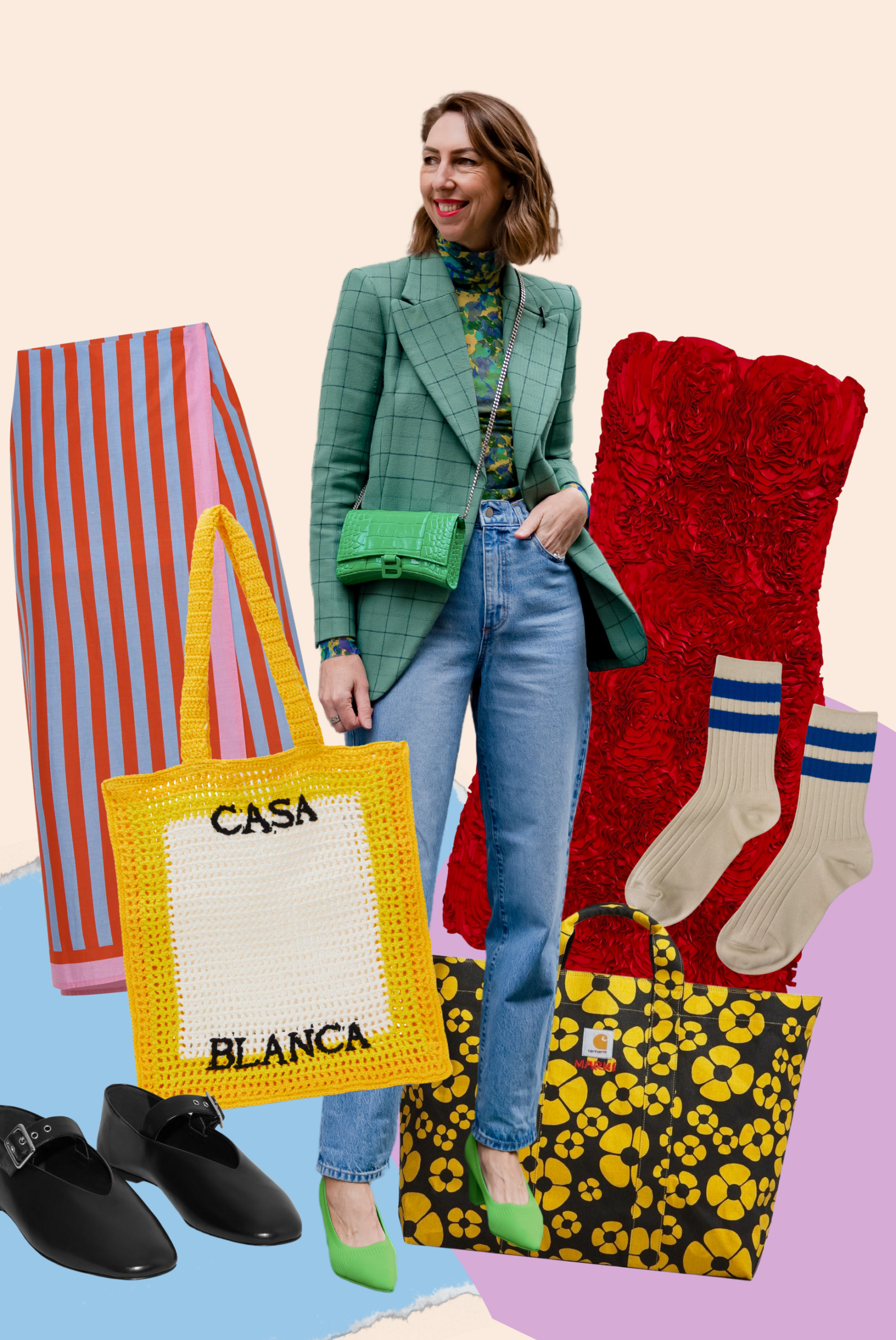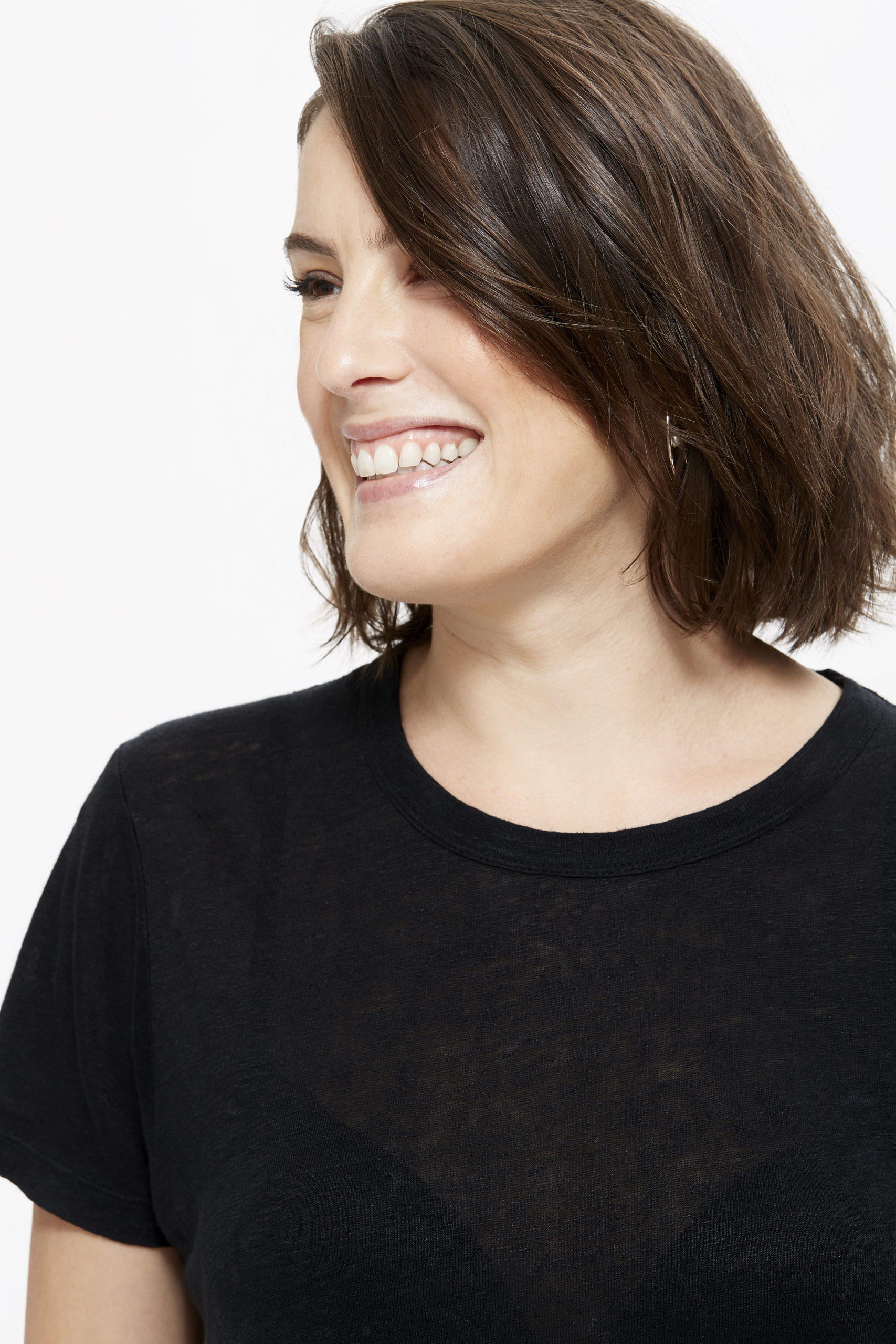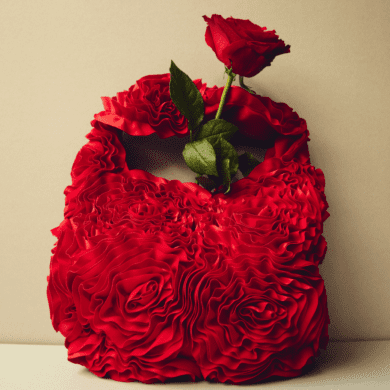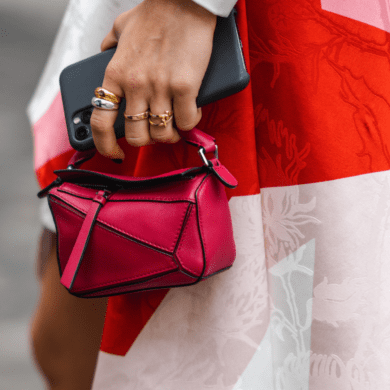It’s the eve of Paris Fashion Week and the founder of fashion brand Tibi Amy Smilovic is standing in front of her mirror snapping photos of the outfits she’s packed for the occasion.
There’s a tan cotton trench, a cosy grey knit and an oversized blazer – all paired with black pants. “The stirrup pant is the extra here,” she writes in the caption of an Instagram post, before revealing that she often wears pantyhose under her jeans for added warmth and “extra stomach coverage”.
It’s straight-talking fashion tips like these, along with her singular sense of style, that have earned Smilovic an audience of more than 160,000 followers on Instagram. There, the Tibi founder regularly dissects her outfits, revealing not only what to wear but, crucially, how to wear it.
A cuffed sleeve here. A sweater tied around the waist there. These are the styling decisions that can transform an outfit, according to Smilovic, who is emblematic of a new kind of stylist – one who is candid and relatable, and favours practical instruction over the lofty inspiration traditionally served up by fashion magazines.
A cuffed sleeve here. A sweater tied around the waist there. These are the styling decisions that can transform an outfit.
And women are hungry for it. In the US, Leandra Medine Cohen has amassed more than 113,000 subscribers to her newsletter, The Cereal Aisle, where she features photos of herself in maximalist outfits and offers insights into why each look works.
Former Wall St Journal fashion editor Becky Malinksy takes a similarly pragmatic approach, offering problem-solving stories like “Non-Sad Black Work Pants” and “Wearing Sheer In Real Life” to her 13,000 newsletter subscribers. Liz Teich, who posts under the social media handle TheNewYorkStylist, has nearly half a million followers who enthusiastically like and comment on her instructional videos.
As the former fashion director of ELLE Australia and Madison magazines, stylist Nicole Bonython Hines has spent decades working in fashion, but only began posting photos of her outfits on social media after friends persuaded her that there was an audience for real outfits worn by an experienced stylist.
She quickly realised there was a demand for practical advice about how to style outfits.
“It’s the details that make the difference,” says Bonython Hines, noting that pushing up the sleeves on a jacket or pairing the right shoes with a bag can be the difference between an outfit that works and one that doesn’t.
“It’s a revelation to me that people don’t know this stuff. To me, it’s common sense – like, surely everybody knows that if you’re wearing a high-waisted pant, you’ve got to have a shorter sweater – but actually they don’t.”
It’s a revelation to me that people don’t know this stuff. To me, it’s common sense.
Melbourne personal stylist Sally Mackinnon agrees. “My followers love all the little stylist hacks – like tucking my shirt into my undies, which I’ve done for years, but never thought to share.”
It was during the pandemic that Mackinnon began experimenting with instructional videos that decoded trends and offered tips on how to wear key pieces. Since then, her Instagram account has grown to 230,000 followers.
Like Bonthyn Hines, Mackinnon operates at the nexus of personal styling and content creation, although she tends to avoid topics that have traditionally been the preserve of wardrobe consultants, like body shape and colour analysis. “I just want to inspire women to really have fun with fashion and not get caught up in the rules per se.”
She is equally uncomfortable with the term influencer, pointing out that she doesn’t receive income from affiliate shopping links (“I don’t want to be guided by advertisers”) and instead offers a $7.99 monthly Instagram subscription, to which several hundred subscribers have signed up.
Both Bonthyn Hines and Mackinnon say that social media, particularly video, lends itself to instructional fashion in a way that other mediums, like print, do not.
“In video form, you can show the transformation right in front of the audience’s eyes,” says Mackinnon. “You can see how a bag across the body or a cuff on a pair of jeans can make such a difference.”
In video form, you can show the transformation right in front of the audience’s eyes.
Her relatable and practical videos – usually shot at home or on the street – are a long way from the lavish spreads that tend to fill the pages of fashion magazines. But as Jana Pokorny, the former fashion director of marie claire, explains, they offer something entirely different.
“Those big fashion spreads tend to translate the mood of the season or convey what’s happening at the highest level of fashion. They’re about evoking a feeling or transporting a reader. It wasn’t about how to wear a dress,” says Pokorny, who once flew 30 hours with a team of eight to photograph a story in remote beach in Brazil.
Those sorts of shoots, which tend to translate poorly to a smart phone, have become a dying art form, she admits. “A lot of money was spent on transporting the reader to far-flung places. And that just doesn’t happen now. Budgets are much tighter.”
A lot of money was spent on transporting the reader to far-flung places. And that just doesn’t happen now.
The decadent magazine shoots of old also often served another purpose: keeping luxury advertisers happy.
“They were one part art, two parts inspiration and five parts a way to satisfy advertisers,” says former ELLE UK editor Farrah Storr, who is now the head of writer partnerships at Substack UK.
She points out that many of the instructional stylists rising to prominence on social media and Substack generate income from subscriptions, rather than advertiser revenue – meaning that they are free to focus on clothing that readers can actually afford.
“It tends to feel much more real and attainable. Right now, Substack is a very interesting place for fashion,” she continues. “It’s not a world of filtered images and aspirational looks from brands few can afford.
“It’s practical style advice and good, old-fashioned shopping. We’re also starting to see a greater honesty about fashion – what’s works but also what doesn’t. Anna Newton did a great post recently which was all about her worst purchases of the year.”
Posts about what not to buy? It’s difficult to imagine a less magazine-like fashion story than that.












No Comments